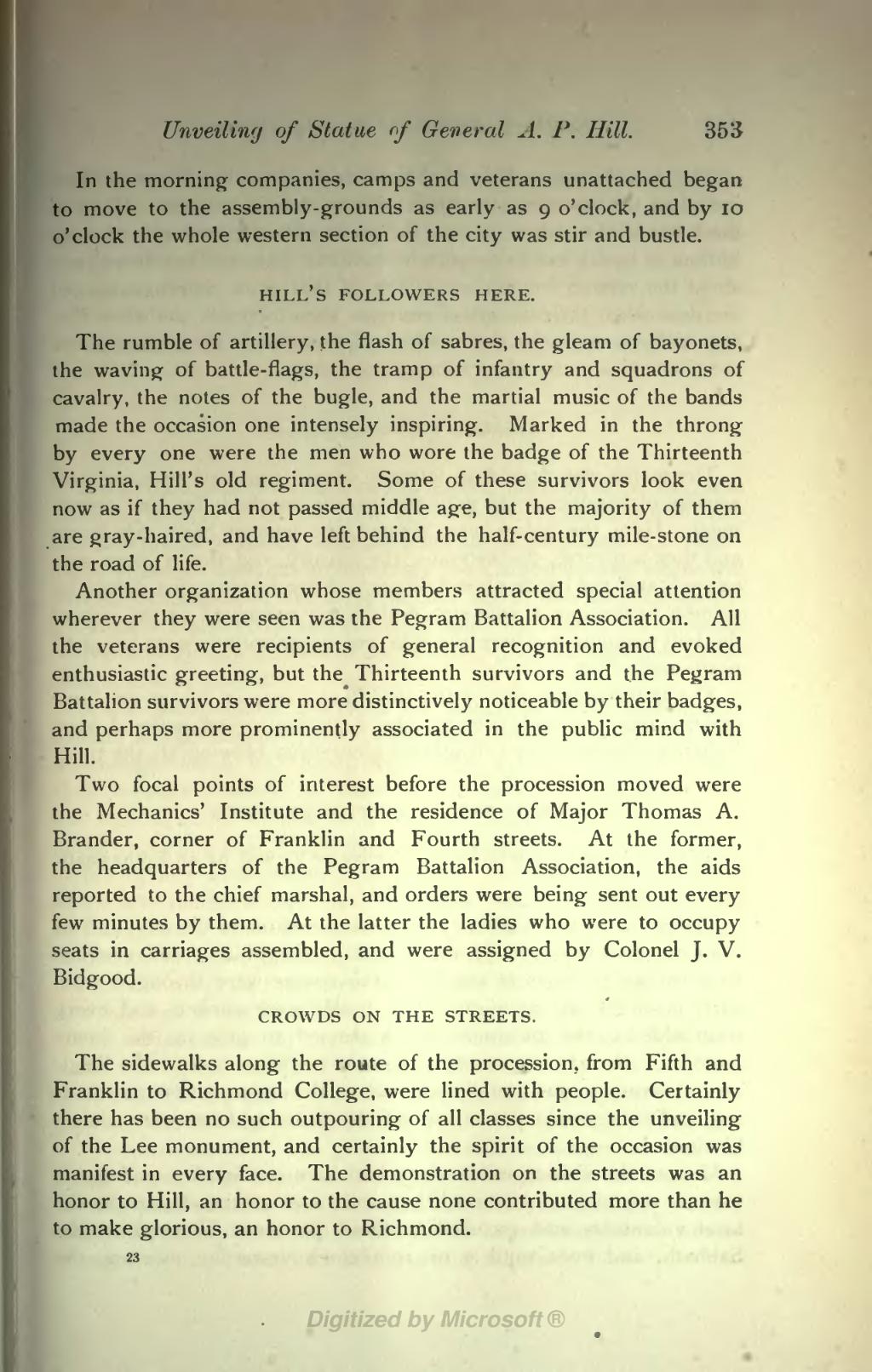Unveiling of Statue of General A. P. Hill. 353
In the morning companies, camps and veterans unattached began to move to the assembly-grounds as early as 9 o'clock, and by 10 o'clock the whole western section of the city was stir and bustle.
HILL'S FOLLOWERS HERE.
The rumble of artillery, the flash of sabres, the gleam of bayonets, the waving of battle-flags, the tramp of infantry and squadrons of cavalry, the notes of the bugle, and the martial music of the bands made the occasion one intensely inspiring. Marked in the throng by every one were the men who wore the badge of the Thirteenth Virginia, Hill's old regiment. Some of these survivors look even now as if they had not passed middle age, but the majority of them are gray-haired, and have left behind the half-century mile-stone on the road of life.
Another organization whose members attracted special attention wherever they were seen was the Pegram Battalion Association. All the veterans were recipients of general recognition and evoked enthusiastic greeting, but the Thirteenth survivors and the Pegram Battalion survivors were more distinctively noticeable by their badges, and perhaps more prominently associated in the public mind with Hill.
Two focal points of interest before the procession moved were the Mechanics' Institute and the residence of Major Thomas A. Brander, corner of Franklin and Fourth streets. At the former, the headquarters of the Pegram Battalion Association, the aids reported to the chief marshal, and orders were being sent out every few minutes by them. At the latter the ladies who were to occupy seats in carriages assembled, and were assigned by Colonel J. V. Bidgood.
CROWDS ON THE STREETS.
The sidewalks along the route of the procession, from Fifth and Franklin to Richmond College, were lined with people. Certainly there has been no such outpouring of all classes since the unveiling of the Lee monument, and certainly the spirit of the occasion was manifest in every face. The demonstration on the streets was an honor to Hill, an honor to the cause none contributed more than he to make glorious, an honor to Richmond.
